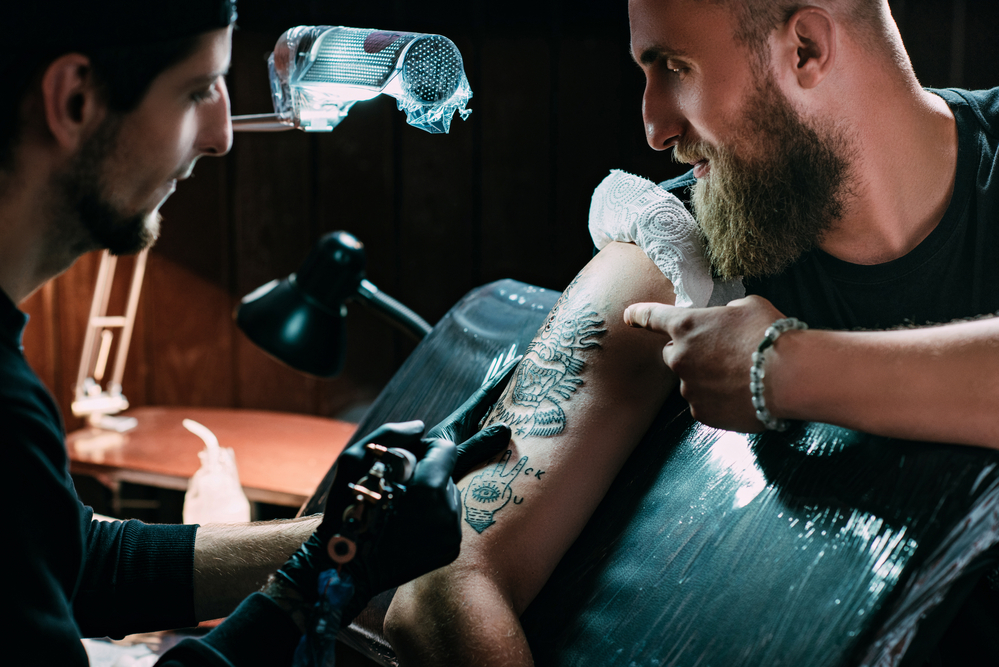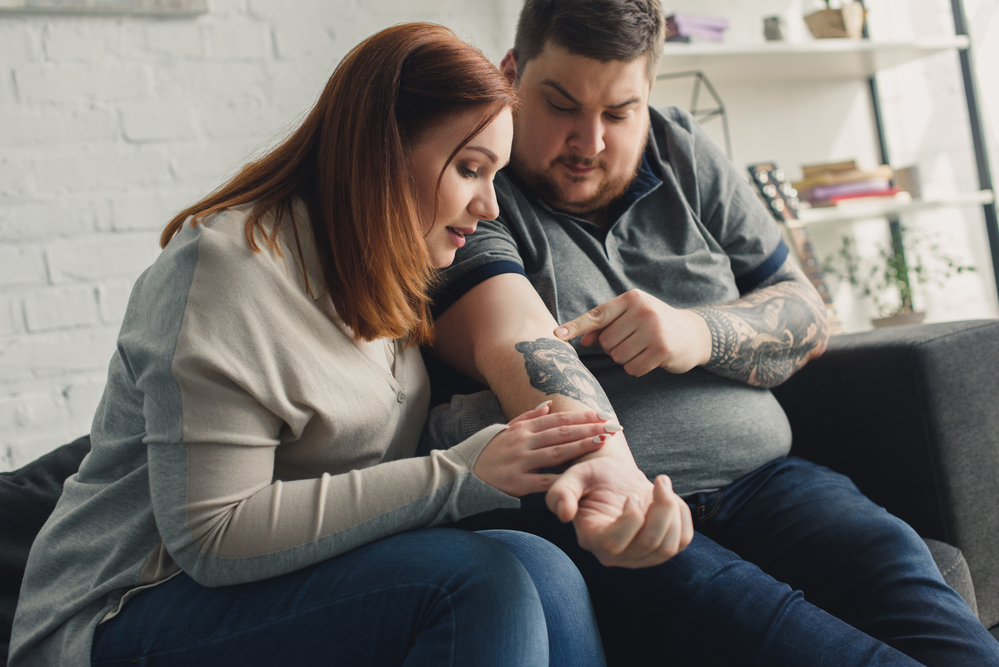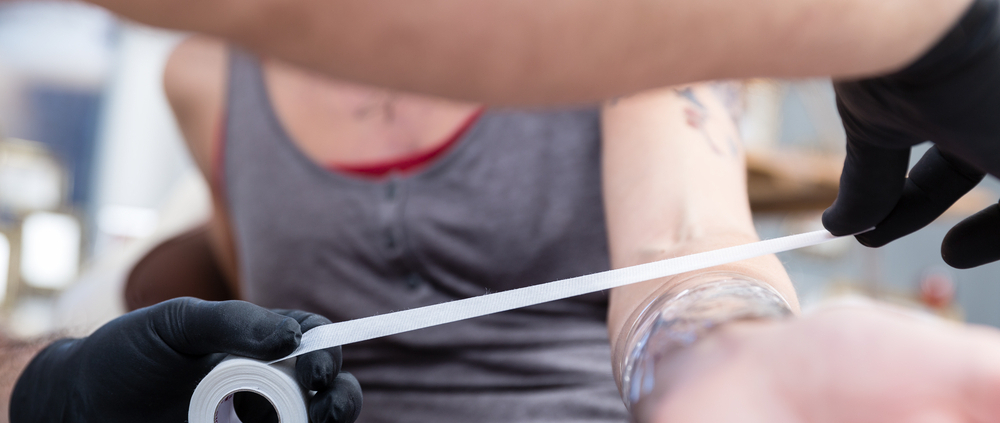What is the Best Tattoo Aftercare Routine?
So you have just gotten a brand new tattoo and are wondering what comes next. Although your tattoo is complete, the journey is not yet over. Now, you need to care for your tattoo so that it heals well and looks vibrant for years to come. Proper tattoo aftercare is also essential to prevent infections and scarring during the healing process. While there are variations on how to care for your tattoo, the artists of Oracle Tattoo Gallery have put together the following guide to explain the best tattoo aftercare routine.
Let’s take a look.
When to Begin Aftercare for a Tattoo
Aftercare starts as soon as your tattoo is completed. Your artist will apply a thin layer of antibiotic ointment over the tattoo and cover it with a bandage or plastic wrap. Follow their aftercare instructions, including when to remove the dressing, how to cleanse the tattoo, and what products to use.

The Best Tattoo Aftercare Routine
Alongside the instructions given to you by your tattoo artist, these steps outline what to do to heal your tattoo correctly for the first 30 days and beyond.
Day 1 Tattoo Care
Your session is a wrap and you leave the shop with some wrappings as well. These dressings can vary and depend on your artist, but they all have the same purpose: To protect your ink from bacteria and irritation. Some artists may use a bit of plastic wrap over your new tattoo. Others may apply gauze or a medical-grade adhesive, also known as “second skin.” Generally, you can remove any gauze or plastic wrap within a few hours. Second skin can stay on for a few days.
When it’s time to remove the dressing, make sure your hands are clean, and gently peel back the wrap. Use warm water and fragrance-free soap to cleanse the area, and pat the skin dry. Do not be alarmed if you notice any blood or fluid on the wrapping. This is a normal part of healing. Wait a few minutes before applying the recommended ointment or lotion.
When washing, do not soak your tattoo for extended periods. That means you will need to avoid the pool and bathtubs for the time being.
Days 2 and 3
On the first day, you may notice that your tattoo looks vibrant and highly detailed. Then on the second and third day of the healing process, your tattoo loses some of that color and sharpness. Scabs may start to form, but do not pick at them, as it can lead to scarring. If any of the inflammation or irritation persists, you can take an anti-inflammatory medication. Avoid using any topical products on your tattoo aside from A&D ointment or an unscented moisturizer.
Continue to wash your tattoo once or twice a day with warm water and fragrance-free soap. Allow the skin to dry before applying the recommended ointment or lotion.
Furthermore, it is essential to wait at least 48 hours before engaging in light physical activity. Remember that your new tattoo is essentially an open wound and is vulnerable to infection and damage. Engaging in strenuous activities or workouts can expose the area to bacteria from sweat and gym equipment, putting your healing tattoo at risk. Also, avoid overstretching the skin around a healing tattoo, as this can impact its appearance when fully healed.
Days 4 to 6
If “second skin” was used, it’s typically removed during this time. Make sure your hands are clean before carefully peeling it off.
Light scabbing persists around the tattoo, along with some skin flaking. Again, it is important that you do not pick, scratch, or do anything with the tattoo other than wash it. These actions can cause damage to your tattoo and skin.
Continue gently washing the tattoo once or twice a day and applying ointment or moisturizer.
Days 6 Through 14
Going into the second week of healing means that your tattoo may look completely healed. Most people will notice that any scabs have or are beginning to flake. The flaking will happen naturally; do not peel off the scabs. Because of this stage in the healing process, your skin may feel itchy. It is recommended that you use an unscented moisturizer or lotion for some relief.
Days 15 Through 30
Now most of the scabbing will be gone, and you will notice that your tattoo looks smooth again. Continue hydrating your skin. By the third week, the outer layers are healed entirely. However, this does not mean you can halt your aftercare routine. It is important that you continue moisturizing the tattoo for 2-6 months. Although the visible layer of skin has healed, the layers underneath need a couple of months.
After that, your tattoo will once again look bright, vivid, and new.
Can You “Dry Heal” a Tattoo?
Dry healing involves allowing the tattoo to heal without applying moisturizer or lotion during the aftercare routine. While some artists and clients opt for this method to reduce the risk of irritation or allergic reactions, there isn’t enough research to prove its benefits or drawbacks. It’s best to consult your artist before trying an unproven method.

Possible Complications During the Tattoo Aftercare Process
For the first few days after getting a tattoo, it’s normal for your skin to be red, itchy, and sore. You may notice excess ink, along with blood and fluid, leaking from the tattooed area. However, if these symptoms persist or worsen, it could indicate an underlying complication.
- Infection: Infected skin will be red, warm, and painful, and the wound may leak pus. Contaminated equipment or ink can lead to bloodborne infections, such as hepatitis B, hepatitis C, tetanus, or HIV.
- Allergic Reaction: Allergic reactions to tattoo ink can cause red, itchy skin at the site. Red dyes are more likely to cause allergic reactions, and some inks can also cause nonallergic skin reactions like photosensitivity.
- Scarring: Damage from the needle or picking at the tattoo can lead to scar tissue formation, which may be permanent.
Further Tattoo Care Instructions: Sunscreen
While following the above steps will ensure that your tattoo heals well, there are a couple of things you must do outside of washing and moisturizing your new ink. One of the most critical aspects of tattoo aftercare is shielding your new ink from the harmful effects of the sun. UV rays can break down the pigment in your tattoo, leading to fading and dullness. During the first two to four weeks, it’s crucial to keep your tattoo out of direct sunlight to allow it to heal properly.
Exposing your fresh tattoo to the sun can cause the skin to become even more sensitive to UV rays, increasing the risk of damage and fading. If you must spend time outdoors, opt for protective clothing that covers your tattooed area. Additionally, using sunscreen is vital to preserving the integrity of the ink.
It is highly recommended that you purchase sunscreen with tattoo-friendly ingredients to prevent fading and reactions.
Looking For A Brand New Tattoo in Philadelphia?
Tattoos are both living pieces of art and a cosmetic procedure. As such, you need to take care of your tattoo so that you can enjoy the masterpiece it becomes for years. The best tattoo aftercare routine guarantees your success, so make sure to follow the guidelines carefully.
If you are looking for a warm and welcoming tattoo shop in Philadelphia, check out Oracle Tattoo Gallery. Our incredible team is not only determined to give you an amazing tattoo but also a wonderful experience. Give us a call or send us a message today to schedule your tattoo consultation.



